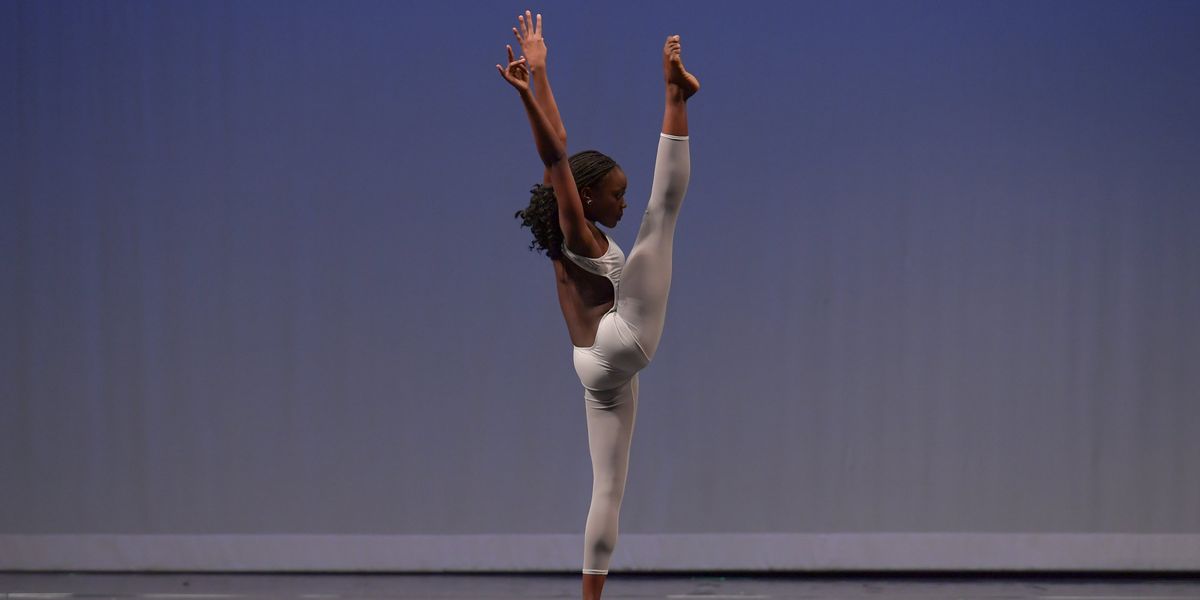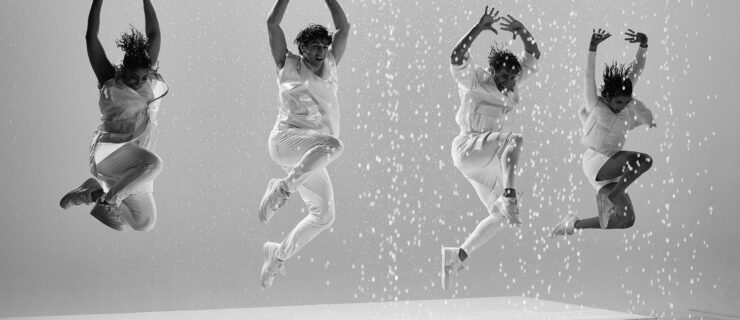Here's How to Keep Your Competition Solo Performance-Ready While Quarantining
When you’re bored in the house (and you’re in the house bored), Nationals can feel like a dream that might never come true. But Kendall Moshay, Hollywood Vibe’s Intermediate Dancer of the Year 2019, knows that now is the time to make like a Girl Scout and be prepared: “Sooner or later, everything will go back to normal—and you don’t want to be left behind.” Here are some top tips to keep your competition solo totally stage-ready, even when you couldn’t be farther from a stage.
Get Your Head—and Hair!—in the Game
You’ve probably heard this from your own teachers a million times, but it bears repeating: “You wouldn’t come to the studio with your pajamas on and your hair a mess, so don’t practice your solo like that,” says Kelly Burke, owner and artistic director of Westchester Dance Academy in Mount Kisco, NY. Burke’s found that those who get ready for quarantine solo rehearsals like they’re “normal” solo rehearsals tend to focus and perform better.

Kelly Burke working with student Sienna Morris over Zoom (courtesy Burke)
Modify to Maximize
Chances are that you can’t safely execute every single step of your solo at home. Mallauri Esquibel, a teacher at NRG danceProject who also guest choreographs across the country, urges caution with floor work, repetitive high-stress jumps, and any acro. At the same time, it’s important to keep going through as much of your solo as you can in order to maintain stamina. Don’t slip into marking your arms, and make sure you’re thinking about activating the muscles you’ll need to execute later what you can’t exactly do full-out now. “You don’t need as much energy to dance in a small space as you do in the studio,” Burke says. “Still, try to push yourself through those three minutes as if you were onstage.” Moshay also recommends adding some cardio cross-training (like jumping rope or boot-camp moves) to your weekly routine in order to keep stamina high.
Dream It Up
If you’re recording your solo practice to watch later (which you should!), it’s all too easy to fall into the trap of beating yourself up over the smallest mistakes. Positive visualization—which Esquibel does with all of her solo clients—can help. Before you begin each practice session, lie on the floor while your music plays. Think your way through the choreography, picturing yourself nailing every trick and authentically channeling the emotions you want to convey.

Kendall Moshay rehearsing at home (courtesy Kendall)
Find Friends
Both Esquibel and Burke note that it’s trickier for teachers to give valuable individual corrections onscreen. Take a page from Moshay’s book and buddy up to get more feedback and accountability. “My friends and I are constantly FaceTiming to give each other tips,” Moshay says. You could also try learning each other’s competition solos—teaching someone else might show you new ways to improve your own performance.
The Write Stuff
There’s never been a better time to start keeping a dance journal. “You need to write down how you’re feeling during this difficult time,” Esquibel says. “Your highs and lows, short-term and long-term goals, and corrections that you want to remember.” And, no, the Notes app on your phone doesn’t count, says Esquibel: “When we do things on our phone, it kind of just feels like texting. It goes in one ear and out the other.”
You Are Your Own Best Teacher
Now’s your chance to get used to performing your solo without a mirror, really paying attention to whether a step feels right. Esquibel, for one, believes the pandemic could actually help some more than it harms: “It’s unfortunate circumstances, but this generation is for sure going to be the strongest and most creative, because they’re having to take responsibility for their own training and artistic development.”
Above all, don’t quit refining your solo because of the uncertainty surrounding this summer’s Nationals. “Don’t let yourself think that all your work was for nothing,” Burke says. “You’re still working on your solos to become a stronger, better, more technical dancer, no matter when you get to perform them.”




